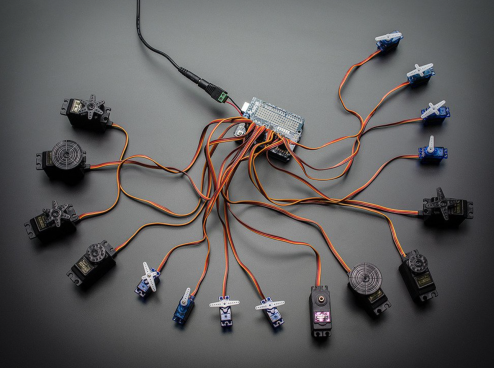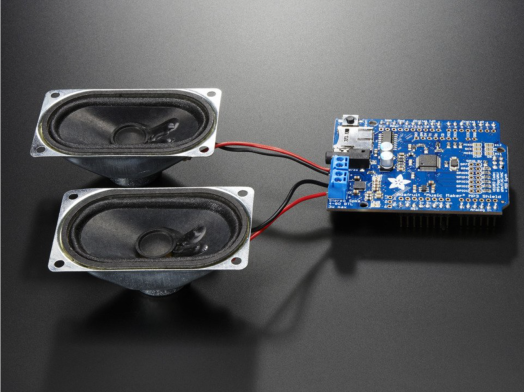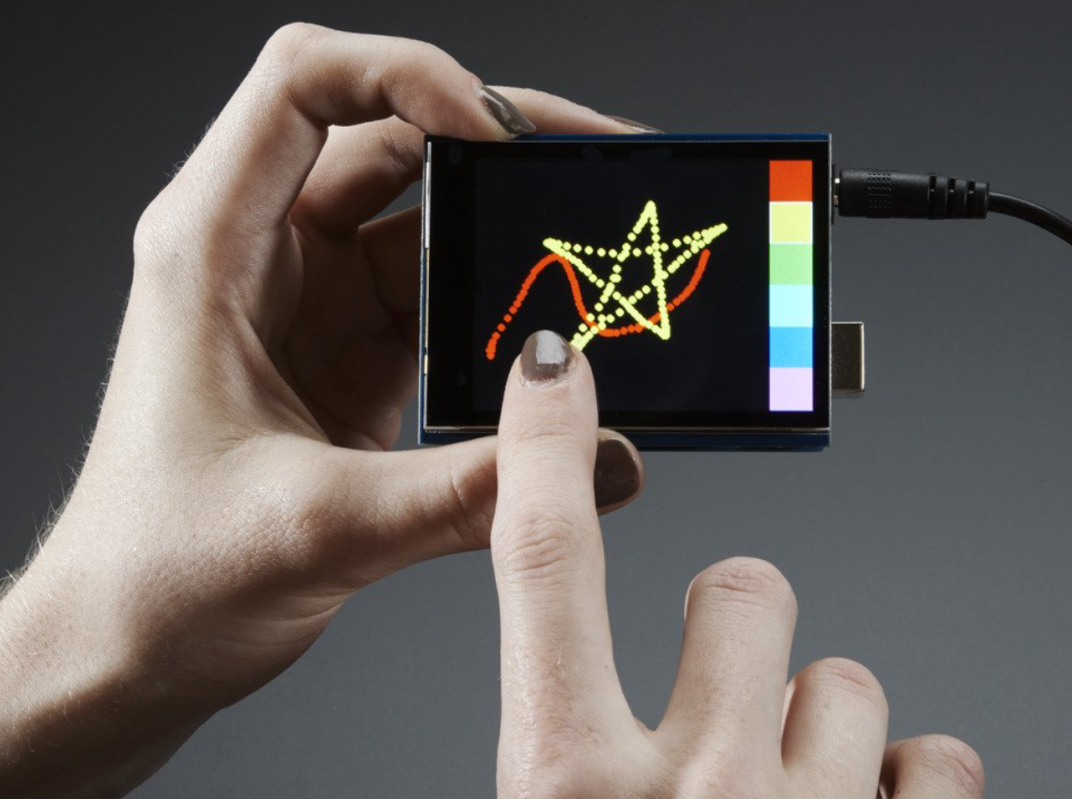Using AdaFruit.com I found 3 different shields that can be used with Arduino to extend the Arduino’s capabilities. Those shields are defined below.

Ada fruit 16- Channel 12- bit PWM/Servo Shield -12C interface
https://www.adafruit.com/products/1411
This shield allows the Arduino to control 16 PWM outputs using only 2 12C pins. This opens up doors to making projects with lots of moving parts. The description on the website discusses the possibility of using this shield for an art project with lots of movement. I can see myself using it for a purpose similar to that as well, because I like art projects and I think it would be cool to incorporate technology into one. I think using this shield it would be interesting to make a project that has a domino effect that causes a final action to happen like sending off a paper airplane or something similar.
A detail I found interesting is that Adafruit says you can stack up to 62 of these shields which would mean being able to control 992 outputs! I can’t even imagine why you would do this or what that many outputs could be used for, but I think it’s crazy that you could do all that from a little Arduino.

Ada fruit “Music Maker” MP3 Shield for Arduino w/3W Stereo Amp – v1.0
https://www.adafruit.com/products/1788
This shield is a speaker that can play several different audio formats including MP3, AAC, WMA and others. In addition to playing audio, this shield can also record audio, which can then be altered by the user. The technology for this shield uses a lightweight SPI interface so that the audio can be played from an SD card. In thinking about how I could see myself using this shield I’m considering it’s possibilities in adding sound effects to some of the game projects that we have created recently in class. I think it would be interesting to add a noise for each time a button is pushed as well as some little tones that play each time a player wins or loses.

2.8″ TFT Touch Shield for Arduino w/Capacitive Touch
https://www.adafruit.com/products/1947
This shield has a capacitive touch screen that is 240 x 320 pixels and has individual pixel control. Because it’s touch screen is “capacitive”and not “resistive” it uses the electrical current of human touch to function rather than a forceful push from a finger or stylus. Therefore this screen has a sleek glass screen. The shield uses SPI for the screen and an SD card as well for it’s functionality.
As with the previous shield, I am imagining some cool uses for this technology in some of the games we have made recently in class. With my mind on games because of our recent activities, I think it would be interesting to use this screen as a way to recreate a Simon Says game. There could be different colored shapes scattered on the screen that act as the buttons which play a sequence and then must be recreated by the user to continue the game.
